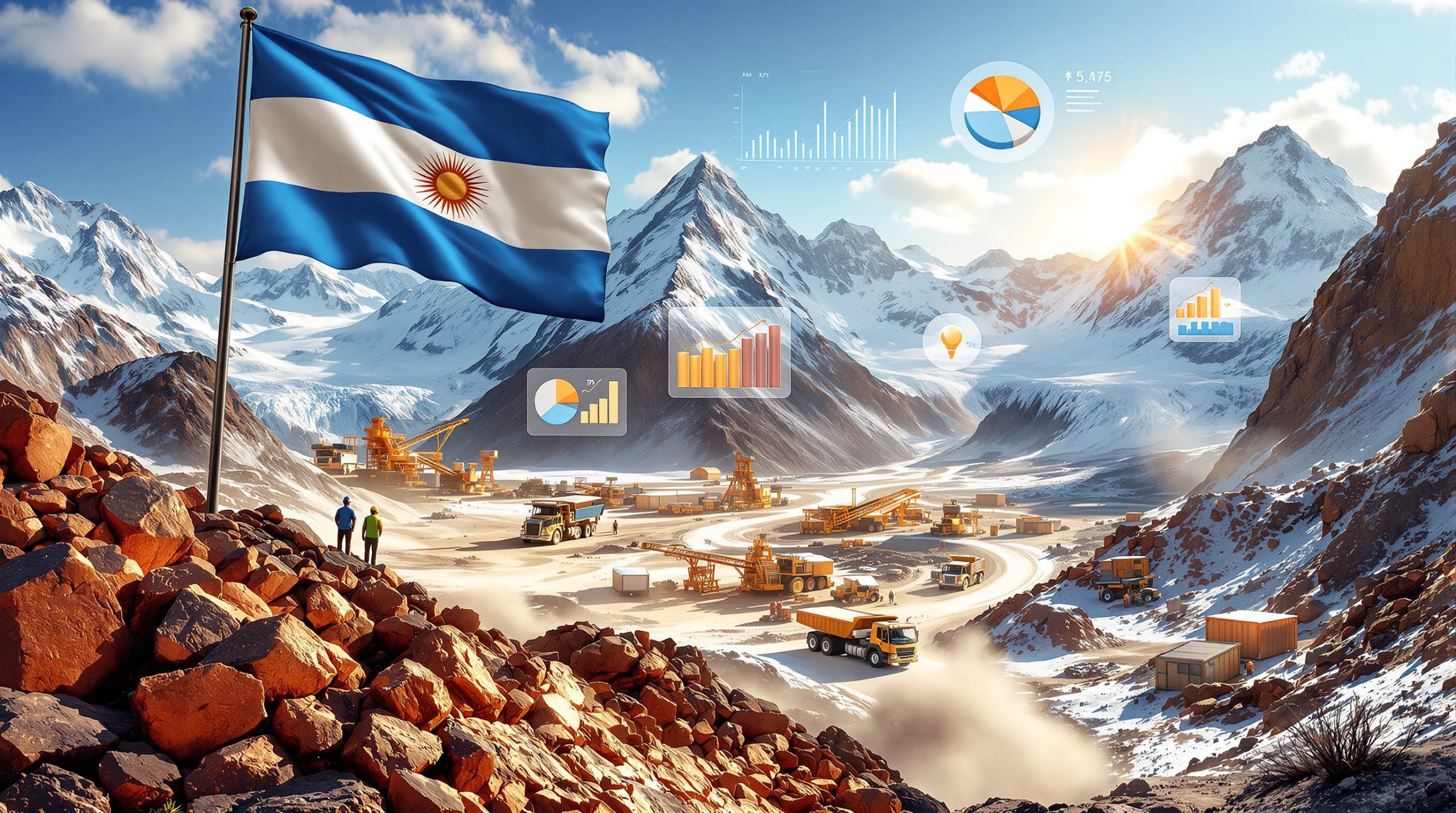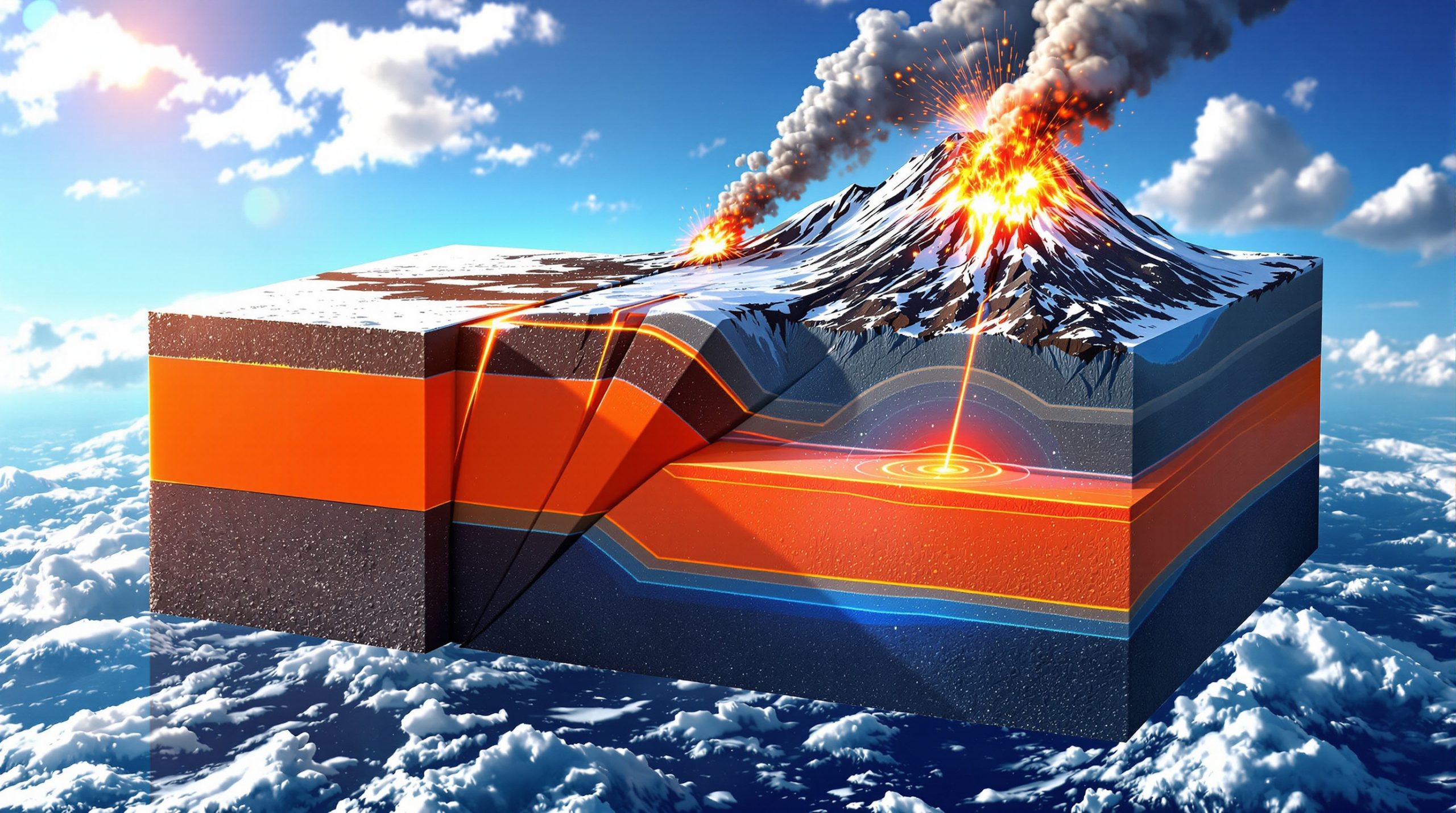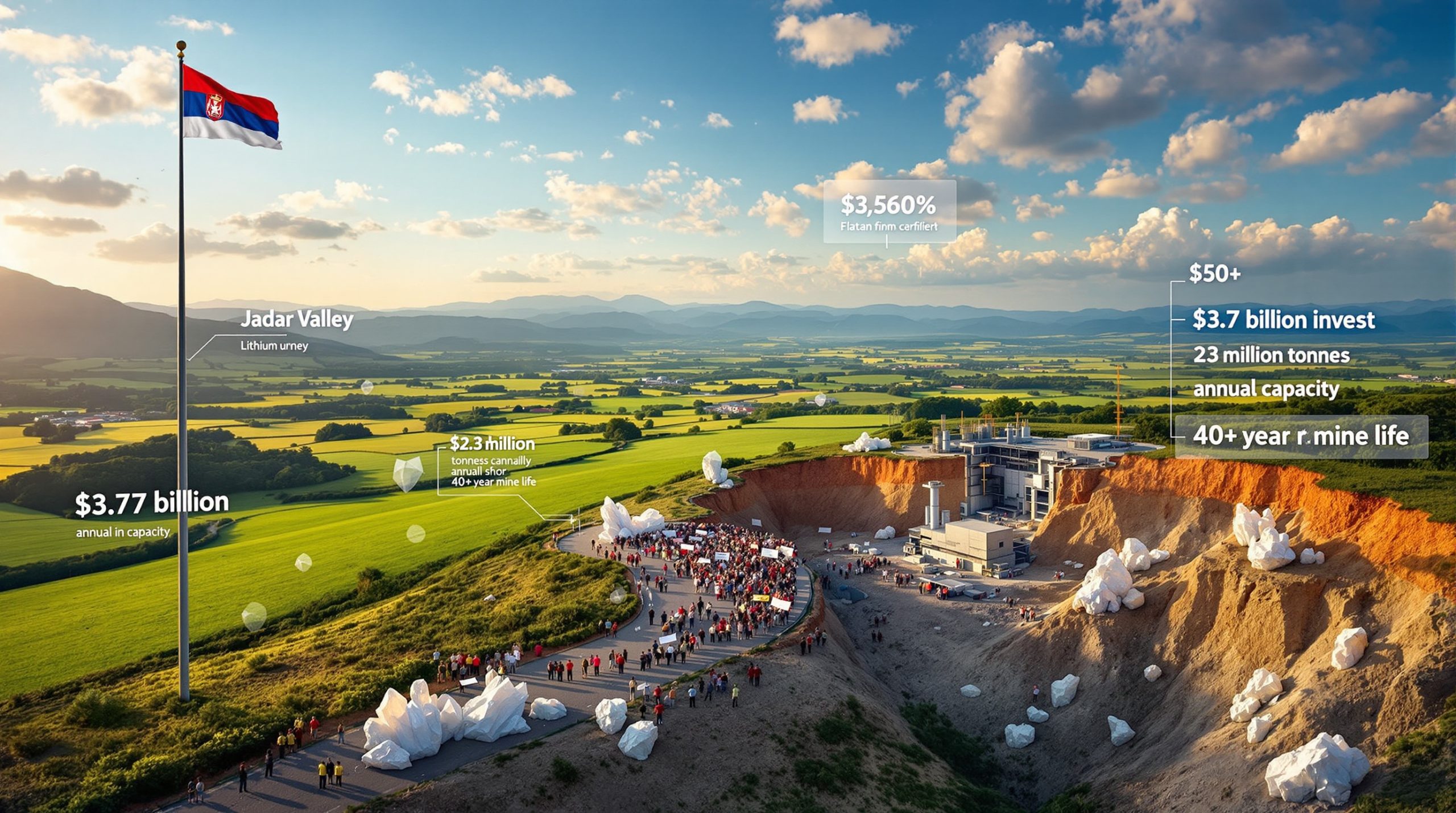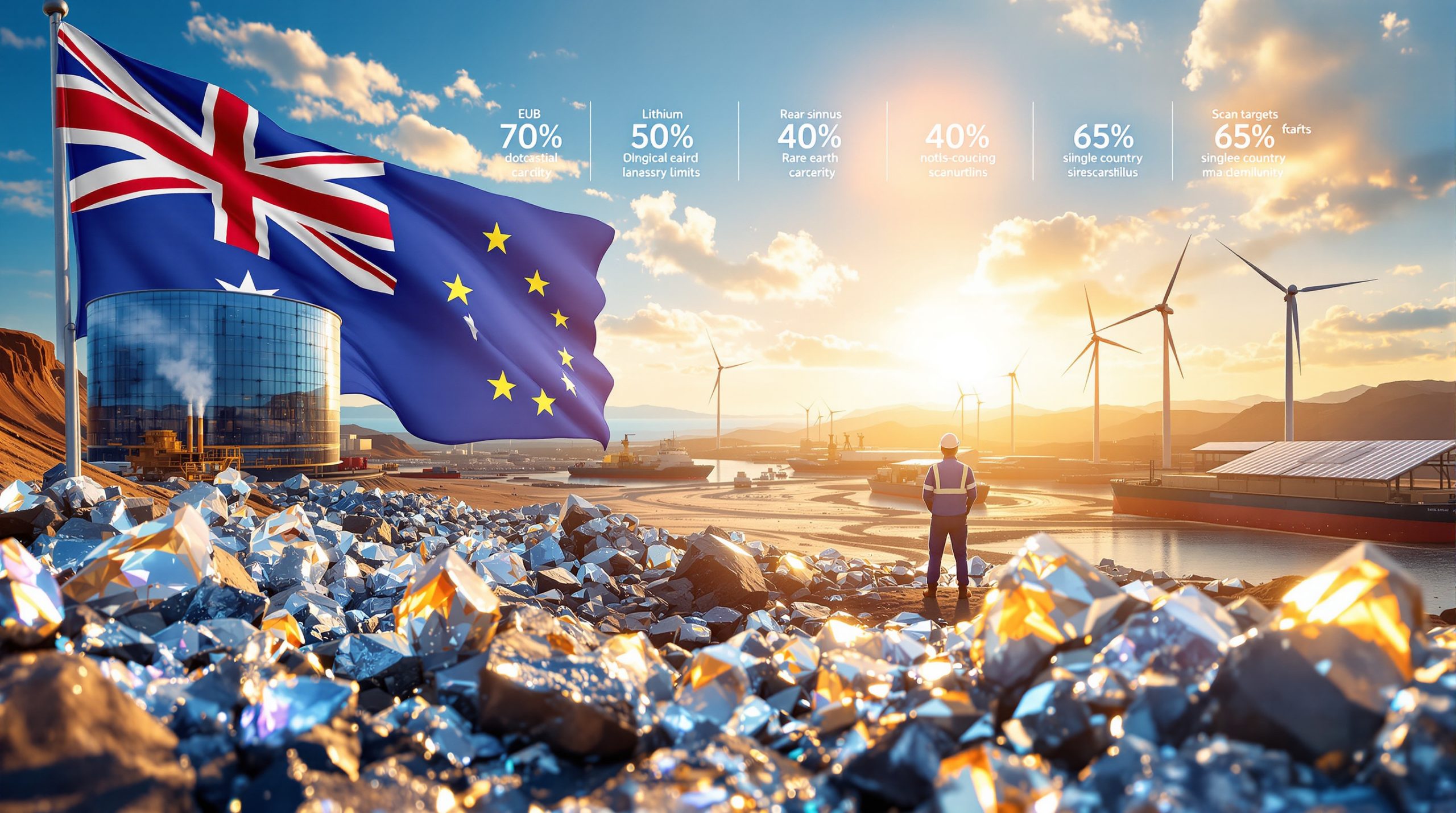What Is the Current US Strategy for Critical Minerals Development?
The United States has significantly shifted its approach to critical minerals development in recent years, recognizing these resources as essential to national security, economic prosperity, and the green energy transition. This strategic pivot comes as global competition for these vital materials intensifies, particularly with China's dominance in the sector. Furthermore, understanding the critical minerals race has become essential for policymakers and industry leaders alike.
The Executive Order on Domestic Mineral Development
A landmark executive order has fundamentally transformed the US approach to critical minerals by streamlining notoriously lengthy permitting processes. Previously, mining permits could take 7-10 years to secure, putting American companies at a severe competitive disadvantage globally.
"The new executive order represents the most significant policy shift in US mineral development in decades," notes industry expert Drew Horn, former Director of the White House Office of American Innovation. "By reducing regulatory barriers while maintaining environmental standards, we're finally addressing the bottlenecks that have hampered domestic production."
The order strategically positions the federal government as a catalyst for growth, particularly in midstream processing—the critical step between mining and manufacturing where raw materials are refined into usable components. This focus addresses what analysts identify as the largest vulnerability in the US mineral supply chain.
According to recent Department of Defense assessments, the US depends on China for processing over 80% of rare earth elements, despite these materials being essential for advanced weapons systems, electric vehicles, and renewable energy technologies. China's rare earth export controls have only heightened the urgency for developing alternative supply chains.
Bipartisan Support for Critical Minerals
Unlike many policy areas, the critical minerals strategy has garnered remarkable bipartisan support. Congressional leaders from both parties recognize the national security implications of relying on potentially hostile nations for materials essential to defense systems and energy infrastructure.
Private sector leaders are increasingly providing direct input to shape government policy, creating a rare public-private collaboration that crosses political divides. The Securing America's Minerals Supply Chain Working Group, comprising industry executives and security experts, has been instrumental in developing comprehensive approaches that balance environmental concerns with national interests.
"We're seeing an unprecedented consensus that the US must restore its leadership in the critical minerals sector," explains Dr. Victoria Samuels of the Critical Minerals Institute. "This isn't just about economic competitiveness—it's about ensuring we control the supply chains for technologies that will define the 21st century."
How Is Greenland Positioned in the US Critical Minerals Strategy?
Greenland has emerged as a pivotal player in the US critical minerals strategy, representing one of the most promising frontiers for developing new supply chains outside Chinese influence.
Greenland's Critical Mineral Wealth
Greenland possesses an extraordinary geological endowment of critical minerals that reads like a who's who of materials essential to modern technology. Recent geological surveys reveal the island contains significant deposits of rare earth elements, zinc, lead, uranium, and gold, with many resources still undiscovered due to limited exploration.
US diplomatic engagement with Greenland has intensified, with multiple high-level delegations visiting in recent years. Trump's controversial approach to critical minerals initiated this strategic focus, famously expressing interest in acquiring the territory—a move that, while controversial, highlighted Greenland's growing geopolitical importance.
The Biden administration has continued and expanded this engagement, albeit with a different approach focused on partnership rather than acquisition. A senior State Department official revealed that Greenland now features in National Security Council discussions regularly—a dramatic elevation in its strategic importance.
"What makes Greenland uniquely valuable is not just the quantity of minerals, but their quality," explains geologist Dr. Mark Tonnesen. "The rare earth deposits at Kvanefjeld, for instance, contain some of the highest concentrations of dysprosium and terbium—elements critical for permanent magnets used in electric vehicles and wind turbines."
Current Investment Climate in Greenland
The investment landscape in Greenland has transformed dramatically with new government leadership that has adopted an explicitly pro-business, pro-development stance. Prime Minister Múte Bourup Egede has signaled strong support for responsible mineral sector growth while emphasizing Greenland's sovereignty.
"We want partners, not patrons," the Prime Minister stated in a recent address to international investors. "Greenland welcomes development that respects our environment and benefits our people."
Several critical mineral projects have already secured permits and are ready for scaling, representing near-term opportunities for American investment. The Nalunaq gold project and the Citronen Fjord zinc-lead deposit stand out as advanced projects with strong potential.
Institutional partners including the U.S. International Development Finance Corporation (DFC) have begun backing projects in Greenland with financing packages designed to compete with Chinese offers. A recent commitment of $10 million in technical development assistance signals growing American institutional support.
What Are the Misconceptions About US-Greenland Mineral Partnerships?
Despite growing cooperation, misconceptions about US intentions in Greenland continue to complicate development efforts and public perception.
Sovereignty Concerns vs. Reality
Media outlets have frequently mischaracterized US intentions in Greenland, particularly after former President Trump's 2019 comments about purchasing the island. This created a narrative that continues to influence discussions, despite significant evolution in the relationship.
While sovereignty concerns exist, they are often overstated in international reporting. Conversations with Greenlandic officials reveal a more nuanced reality: local leaders overwhelmingly support development and US investment as pathways to greater economic independence from Denmark.
"The business case for development exists independently of political discussions," notes economic analyst Sarah Jensen. "Greenland possesses minerals the world desperately needs, and the US represents a stable partner with aligned values on environmental protection and labor standards."
Recent polling shows approximately 68% of Greenlanders support increased foreign investment in their mineral sector, provided environmental protections remain robust and local communities benefit directly. This aligns with broader global commodities market insights that highlight the importance of social license to operate.
Addressing Uranium Development Concerns
Uranium development has historically been Greenland's most controversial resource topic, creating political divisions within the territory and tensions with Denmark. However, the current Greenlandic administration has not categorically ruled out uranium development, instead taking a project-by-project approach.
Companies like GreenMet have strategically focused on projects without radioactive elements of concern, avoiding the regulatory and political complications that come with uranium extraction. This approach has proven successful, with several non-uranium projects advancing rapidly through permitting.
Projects with existing permits represent significantly reduced regulatory risk for investors, offering clear pathways to development without the uncertainty that has plagued other Arctic resource ventures. The Greenlandic government's recent establishment of a one-stop regulatory shop for mineral investments further streamlines the process.
How Are North American Rare Earth Supply Chains Being Developed?
The development of North American rare earth supply chains represents a critical component of reducing Chinese dominance in the sector, with several key projects advancing rapidly.
The Strange Lake Rare Earths Project
One of the most promising developments is GreenMet's partnership with Torngat Metals on the Strange Lake project in Quebec, Canada. This massive deposit contains seventeen rare earth elements and has been assessed as one of the largest and highest-grade resources outside of China.
Investment giant Cerberus Capital Management has committed substantial funding to advance the project through bankable feasibility study, representing a vote of confidence from mainstream financial institutions. According to project leaders, development is proceeding on schedule and has been "a resounding success" in early-stage work.
The project includes plans for a sophisticated midstream processing and metallurgy facility located in the northeastern United States, creating an integrated supply chain entirely within friendly nations. This processing capability is particularly significant as it addresses America's most critical supply chain vulnerability.
"What makes Strange Lake transformative is its scale," explains mining engineer Dr. Robert Chen. "When fully operational, it could supply up to 16% of global heavy rare earth demand—enough to fundamentally alter supply dynamics and provide genuine competition to Chinese producers."
US-Canada Mineral Cooperation
The partnership between US and Canadian mineral sectors represents a model for allied nation cooperation on critical resources. Despite occasional trade tensions between the countries, mineral development collaboration has remained remarkably stable.
Co-investment and co-leadership between US and Canadian counterparts create institutional frameworks that transcend administration changes in either country. This stability is crucial for projects that require decades-long development timelines.
The focus on bringing materials into US manufacturing at precisely the right stage optimizes economic benefits while minimizing transportation and environmental impacts. Recent innovations in hydrometallurgical processing have reduced energy requirements by approximately 35% compared to traditional methods, addressing a major criticism of Western rare earth production.
What Impact Will Trade Tensions Have on Critical Mineral Development?
While global trade faces increasing frictions, the critical minerals sector enjoys unique insulation from many of these challenges due to its strategic importance.
Navigating US-Canada Trade Challenges
Recent trade complications between the US and Canada have created economic ripples across various sectors, but critical minerals development has remained largely protected from these tensions. Both governments recognize the existential importance of secure supply chains for these materials.
The new executive order on domestic mineral development explicitly signals continued prioritization of these resources regardless of broader economic conditions. Congressional leadership from both parties has maintained support for critical minerals initiatives, even during periods of partisan disagreement on other issues.
"Critical minerals represent a rare area of policy continuity across administrations," notes political analyst James Thornton. "The national security implications are too significant for the usual partisan oscillations we see in other sectors."
Investment Opportunities During Market Uncertainty
Current market conditions present particularly favorable timing for US mining and processing investments. Government funding through Department of Defense programs, DFC financing, and other agencies provides capital at advantageous rates specifically for critical mineral projects.
The fast-tracking of mine permits creates near-term opportunities that were previously impossible due to regulatory timelines. Projects that might have taken a decade to reach production can now potentially be operational in 3-5 years.
Industry analysts note that the business case for critical minerals development stands independent of broader economic conditions, as demand for these materials continues to grow exponentially with the expansion of green energy and defense technologies. Recent projections from the International Energy Agency estimate that demand for key minerals like lithium and cobalt could increase by 400-600% by 2040.
How Is Public Awareness Affecting the Critical Minerals Sector?
Public understanding of critical minerals has transformed dramatically in recent years, creating both challenges and opportunities for the sector.
Growing Recognition of Critical Minerals Importance
Public awareness of critical minerals has expanded dramatically, from presidential speeches to celebrity entrepreneurs highlighting their importance. Terms like "rare earths" and "critical minerals" have entered public discourse in ways unimaginable just five years ago.
This growing recognition extends to understanding how these materials connect to everyday technologies. Consumers increasingly recognize that smartphones, electric vehicles, and renewable energy systems all depend on secure supplies of these specialized materials.
The national security implications have also gained traction in public consciousness, with 64% of Americans now identifying critical mineral dependency as a significant security concern according to recent polling. This represents a dramatic shift from just 23% awareness in 2018.
Investment Implications
The investment landscape reflects this growing awareness, with serious commitments from investors across the sector. Venture capital funding for critical mineral startups reached $2.8 billion in 2023, representing a 340% increase from 2019 levels.
Development momentum has proven remarkably independent of geopolitical conditions, continuing through administration changes, pandemic disruptions, and economic fluctuations. This stability reflects the fundamental recognition that these materials are essential regardless of short-term market conditions.
The business case for critical minerals development remains strong even in challenging economic environments. Projects with clear paths to production, particularly those with processing capabilities, continue to attract premium valuations from investors seeking exposure to this strategic sector.
For investors, the opportunity to participate in the development of a vital new sector combines potential financial returns with contribution to national security and energy transition goals—a rare alignment of profit and purpose that characterizes the most promising investment frontiers. Understanding the crucial role of mining in the clean energy transition is increasingly becoming a priority for both industry and government stakeholders.
FAQ About Critical Minerals and Strategic Partnerships
What are critical minerals and why are they important?
Critical minerals are essential materials used in technologies ranging from smartphones to fighter jets that face supply chain vulnerabilities. They include rare earth elements, lithium, cobalt, and dozens of other materials that enable modern electronics, defense systems, and clean energy technologies.
Their importance extends beyond economics to core national security concerns. A single F-35 fighter jet contains approximately 920 pounds of rare earth elements, while each Virginia-class submarine requires nearly 10,000 pounds of these specialized materials.
How is the US government supporting critical mineral development?
The US government has implemented a multi-faceted approach including streamlining permitting processes that previously took 7-10 years, providing direct funding through agencies like the Department of Defense, and creating strategic partnerships with allied nations.
Recent legislation authorized $2.7 billion specifically for critical mineral supply chain development, representing the largest investment in the sector in US history. The Defense Production Act has been leveraged to prioritize critical mineral projects, providing both funding and regulatory advantages.
What makes Greenland particularly valuable for critical minerals?
Greenland's unique geological formation as one of the oldest exposed land masses on Earth creates exceptional mineral concentrations. The island contains over 25 of the 50 minerals designated as critical by the US government, often in unusually high concentrations.
Beyond geology, Greenland offers political stability within the Western alliance system while maintaining geographic proximity to both North American and European markets. Its autonomous government has explicitly prioritized resource development as a pathway to greater economic independence.
How does the development of North American supply chains reduce dependency on China?
By developing integrated mines, processing facilities, and manufacturing capabilities across friendly nations, North America can create alternative supply chains for materials currently dominated by Chinese companies. This reduces vulnerability to supply disruptions and price manipulation.
Recent analyses indicate that coordinated North American development could potentially replace up to 67% of current Chinese supply for key minerals within a decade, representing a transformative shift in global supply dynamics.
What are the main challenges in developing critical mineral projects?
Despite progress, significant challenges remain, including technical complexities in processing (particularly for rare earth separation), substantial capital requirements often exceeding $500 million for large-scale projects, and ongoing environmental concerns.
Geopolitical complexities also affect project viability, with Chinese state-backed companies often able to operate at artificially low prices to maintain market dominance. Western projects must therefore achieve exceptional efficiency while meeting higher environmental and labor standards.
Ready to Stay Ahead of the Next Major Mineral Discovery?
Discover how ASX investors can capitalise on critical minerals and rare earth opportunities with real-time alerts from Discovery Alert's proprietary Discovery IQ model, ensuring you never miss a potentially transformative announcement. Explore our dedicated discoveries page to understand the historical returns of major mineral discoveries and begin your 30-day free trial today.




